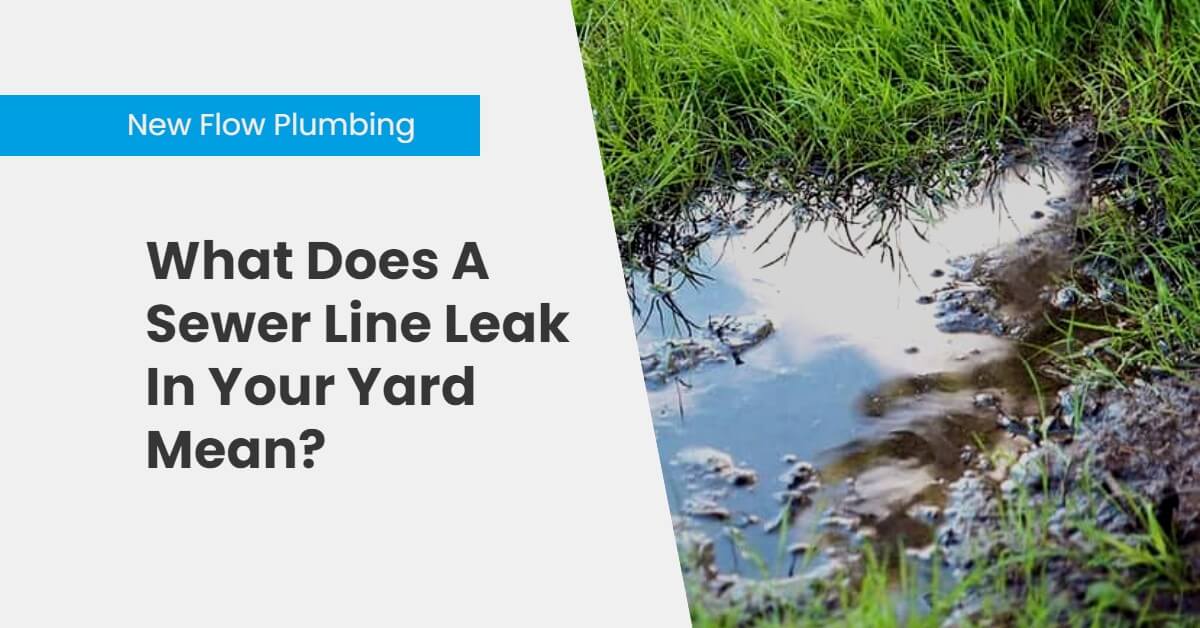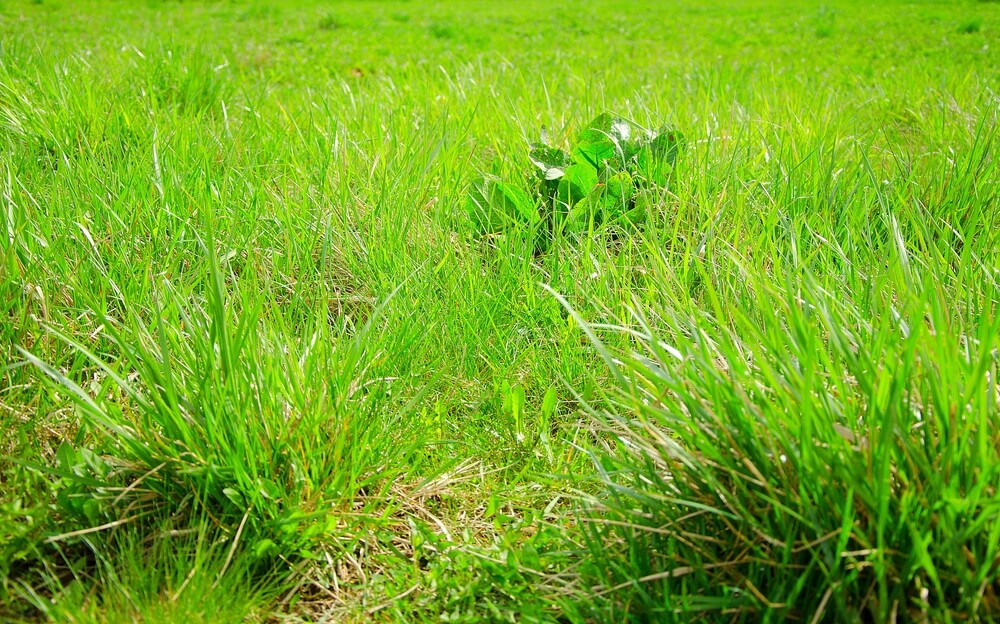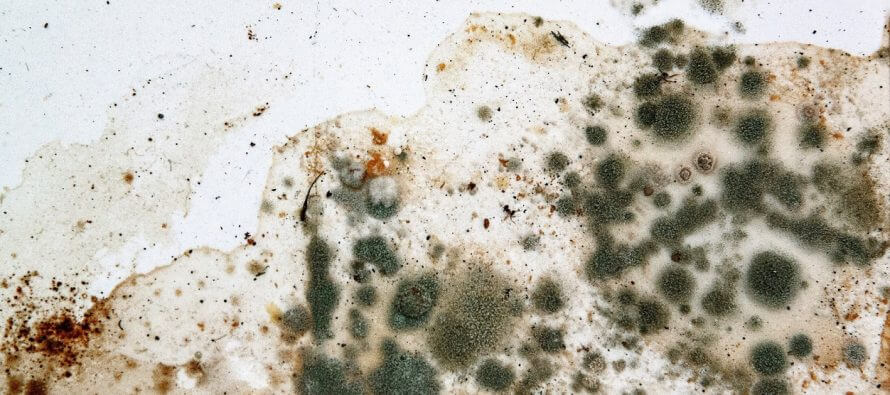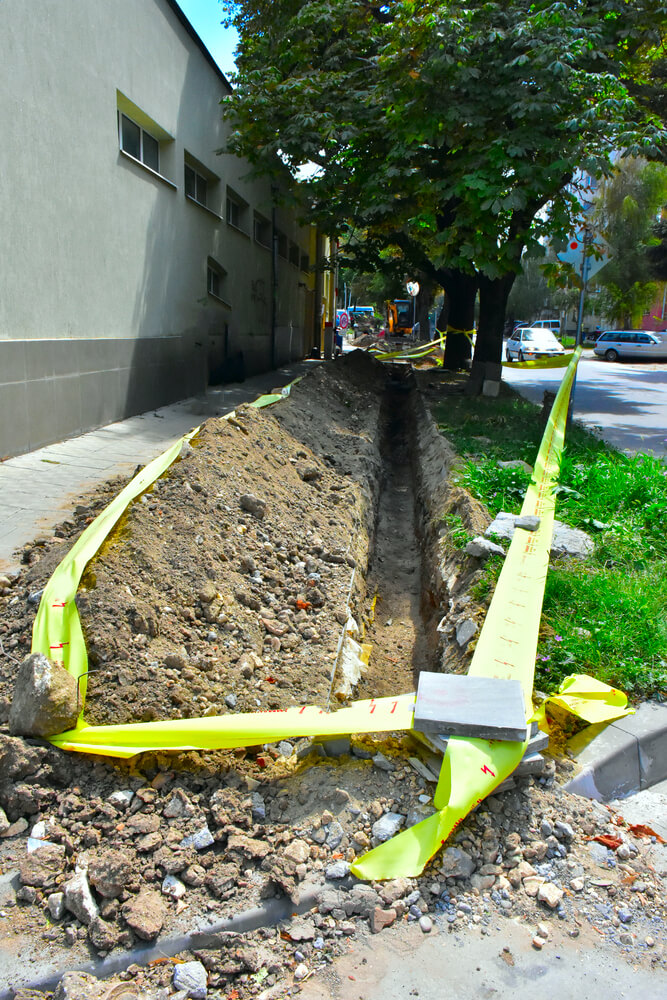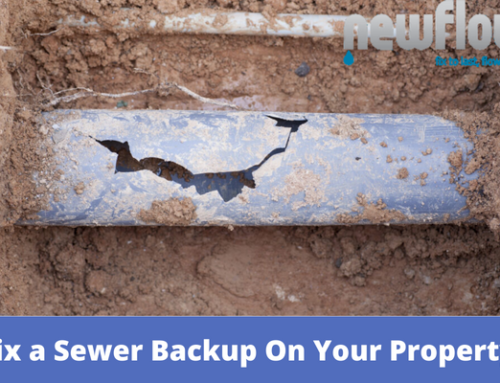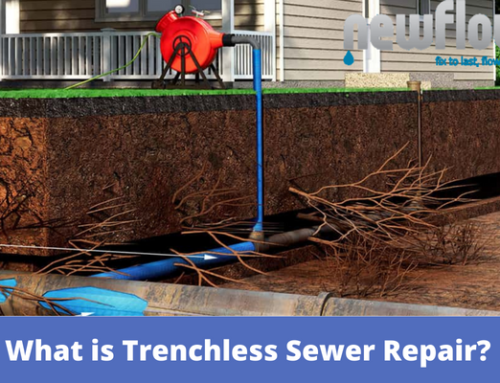What Does A Sewer Line Leak In Your Yard Mean?
Is there a sewer line leak in your yard? Can you spot puddles of water or extra green grass? What does all this mean? Let’s start with the basics. First, what is a sewer line?
What Is A Sewer Line?
The sewer line is the main pipe that collects and carries waste out of your home. All of your toilets, showers, sinks, and any fixtures with a drain line, connect to the sewer line. The sewer line is split into parts: the upper and lower laterals.
Upper Sewer Lateral –These pipes typically run under your yard and foundation. The upper lateral begins below your foundation and ends at a cleanout near your sidewalk or property line.
Lower Sewer Lateral – The lower lateral starts where the upper ends and connects to the city-owned sewer line. These lines run under the public road.
What Does A Sewer Line Leak In Your Yard Mean?
If you notice puddles of sewage waste floating in your yard, you have a broken sewer line! The damaged section of pipe is leaking “fertilizer” into your grass, making it grow more than usual. You might even be smelling a foul odor when you’re outside.
Besides puddles, you may notice dips or small valleys in your yard. What’s that all about? That’s what happens when sewage meets expansive soil. Expansive soil is clay-rich soil that expands when it gets wet and shrinks when it dries out.
Other Signs Of A Broken Sewer Line
Other signs of a broken sewer line include:
Constant Backups – When your sewer line is broken, anything connected will begin to clog, such as toilets, showers, and sinks.
Sewer Odors – If you smell sewage in your home and have already taken out the trash, there’s most likely a broken waste pipe. These odors can be toxic and harmful to your family.
Slow Drains – If all of your fixtures appear to be draining slower than usual, your sewer line might be clogged or broken.
Foundation Issues – This may surprise you. How could a sewer line affect your foundation? If your house was built on expansive soil and the soil gets wet from a broken sewer line, it can cause the soil to expand. If the soil shifts, your foundation can shift as well.
Wall Damage – If a sewer pipe is broken inside a wall, it can start affecting the drywall, wood, and paint. Sewage waste is hot and increases the humidity in your home if it’s leaking, creating the perfect environment for mold and mildew.
Unwanted Pests – Mice can fit through holes the diameter of two pencils, while rats can fit through openings as small as a quarter. Imagine what they will do when a fresh warm sewer line opens for them. Don’t forget about the cockroaches and flies that love to play in sewage.
Read also – How A Sewer Line Inspection Saves You Money
Reasons Why Sewer Lines Break
Below are some common reasons why sewer lines break.
- Tree Roots – Did you know that a tree’s root system is twice as wide as its canopy. Imagine all those roots seeking out water, aiming towards joints and cracks in your pipes.
- Old Pipes – Old sewer lines made from cast iron or terracotta are more likely to fall apart or leak. Cast iron corrodes and rusts over time, while terracotta pipes are very susceptible to roots and leaks. If your home was built recently, chances are you have PVC sewer pipes. But if your home was built before the 70s, you’ve probably got either cast iron or terracotta pipes.
- Soil Failure – If your soil shifts, it can induce pressure on your sewer line, causing the pipe to crack, leak, and collapse. Soil can shift due to rain, flooding, drought, freezing temperatures, and more.
- Clogs – Oil, grease, and fats tend to build up inside your pipes, shrinking the space waste needs to flow through. Things like “flushable” wipes, paper towels, or too much toilet paper can build up at sections where they clog. Remember only to flush toilet paper and bodily waste. Do not pour grease down your sink.
How To Fix A Broken Sewer Line
A sewer line repair specialist will choose one of three routes to fix a sewer line. They can go the traditional route, digging up your lines and replacing them manually. Or, they can choose a trenchless repair method, such as pipe-lining or pipe-bursting.
Conventional Trenching
If a sewer pipe is extremely damaged, you will have to replace the pipe using traditional trenching methods. A sewer line must be sloped toward the city connection, allowing gravity to move sewage down the line. If contractors installed the pipe using the wrong slope, the waste begins to flow toward your home. These types are pipes are considered back-pitched. Trenchless technology does not work on pipes that are back-pitched.
Traditional methods involve digging up your yard and trenching through your home. The procedures are invasive, but trenching is the only solution for collapsed, disintegrated, or back-pitched pipes.
Pipe Lining (Trenchless)
Pipe lining is a trenchless sewer repair method that can safely replace your sewer line without digging up floors. A CCTV sewer camera inspection will determine if your pipes qualify for trenchless repair methods.
The process begins when an epoxy-impregnated liner is inserted into the old pipe and inflated, creating a new pipe inside the old one. Pipe lining can be considered replacement or repair depending on whether the whole pipe length will be lined or just a section. If only a section of pipe (a spot repair) is lined, it is considered a repair. If you line the entire sewer line, it is like getting a brand new pipe installed (aka replacement).
Pipe Bursting (Trenchless)
Pipe bursting is where a new HDPE (high-density polyethylene) pipe is attached to a winch with a cone-shaped bursting head and pulled through the damaged line. The damaged pipe breaks apart as the new one takes its place, giving you a durable brand-new sewer line.
Cost To Repair A Sewer Line Leak
Trenchless sewer repair can cost anywhere between $4,000-$15,000 for the average single-family home. The price of a job depends on how much pipe is being repaired. Of course, there will always be a base cost starting at permits, contractor mobilization, and project minimums.
Conventional sewer repair, on average, costs $50 to $450 per linear foot. The price to install brand new pipes throughout your home or yard could run to $15,000 because of all the extensive work, such as trenching and excavation. Conventional sewer repair quotes will be lower than trenchless, but they don’t include the cost to clean up the property damage left over.
Who Can Fix The Sewer Line Leak?
It’s time that New Flow Plumbing comes in to save the day. We’ll get you started with a CCTV sewer camera inspection to determine where your problems come from. Then, we give you a free repair estimate, followed by available repair options. Whatever the issue, New Flow Plumbing will have your plumbing running perfectly again. Call us today.

